The Japanese Garden Sustainability Committee
was established early in 2012 to study issues concerning the future of the Seattle Japanese Garden with regard to its physical maintenance as well as its ability to become economically self sustaining. The committee consisted of 2 members each from the several Japanese Garden support groups: the Japanese Garden Advisory Council, Arboretum Unit 86 and the Japanese Garden Society of Seattle.
The findings of the committee focused on two areas:
1) the physical condition of the garden and a prioritized list of proposed maintenance projects
2) a commissioned study to recommend the most efficient and effective operating model for the garden going forward.
The first phase of the Sustainability Committee was completed in October of 2012. The second phase was completed in May of 2014, when Consult Econ, a Boston consulting firm, issued its final report: a comparative study of other Japanese Gardens around the US and a strong recommendation that a Non-Profit operating model has the "best potential" benefits for Seattle's Japanese Garden going forward.
The Pond Renovation Project of Winter 2013-2014
was jointly funded by the Japanese Garden Society, the Japanese Garden Advisory Council and Seattle Parks & Recreation and completed by Turnstone Construction during the annual winter closing of the garden.
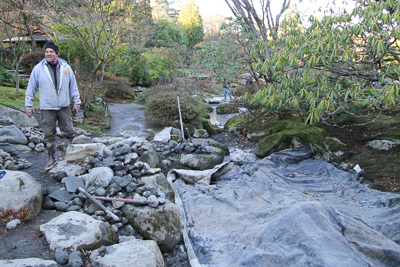
1 of 12: Turnstone Construction cleaned sediment accumulation from the stream bed above the pond, then restored stream banks and lined the bottom.
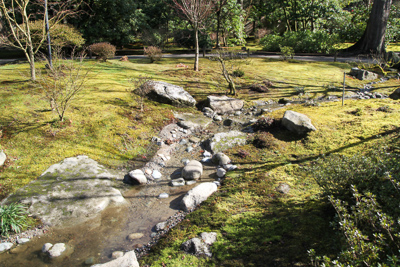
2 of 12: Stream beds higher up the hillside had been restored and re-lined in prior years. The improved stream beds will help restore water flow and at the same time reduce future erosion.
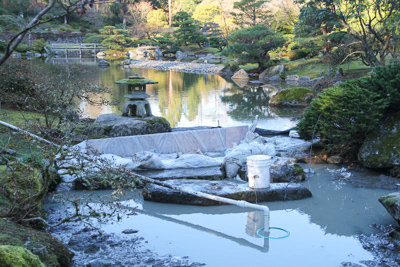
3 of 12: To do the work, Turnstone built a cofferdam and drained the headwaters of the pond; then dredged sediment down through several layers to the native gray clay base. Going any deeper would have undermined the existing stepping stones.

4 of 12: Turnstone then rebuilt and stabilized the headwater banks and lined the bottom of the area with high strength, steel reinforced structural concrete coated with a natural colored, stream textured mortar. The improved pond headwaters area now serves as a catch basin for drainage and sediment from the surrounding hills that can be periodically cleaned to reduce the amount of sediment sifting into the larger pond.
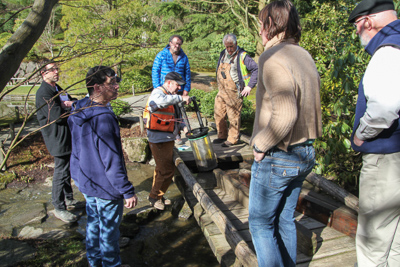
5 of 12: In another part of the project, Turnstone replaced the filter baskets at the pond outflow drain, which is hidden under the wooden bridge near the wisteria trellis. The new larger baskets should improve pond outflow and general water circulation.
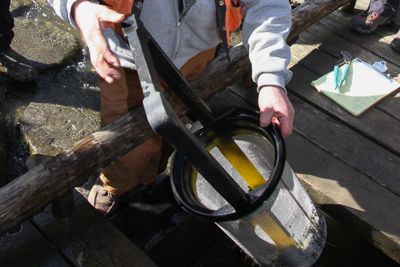
6 of 12: The 2 new filter baskets can be easily removed and cleaned once each day as part of regular garden maintenance. The process should take only about 10 minutes.

7 of 12: Outside side of the garden fence beyond the outflow drain, Turnstone replaced the vault manhole covers with lighter weight versions for easier access and the old stainless steel filter with a heavy duty, long life, easily cleanable, plastic filter. From this vault, water is filtered one more time before going to the recirculating pumps and excess water spills into Arboretum Creek.
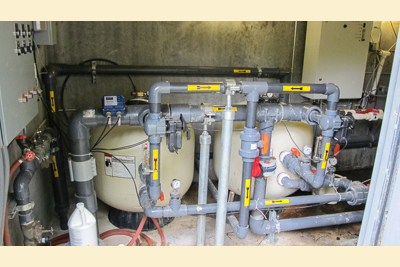
8 of 12: For perhaps the biggest impact to the health of the pond, Turnstone replaced the existing 10 year old recirculating pump system, which was more suited to swimming pools than to natural ponds. The new pumping system is smaller, with greater capacity and efficiency.
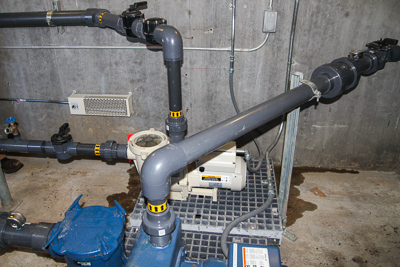
9 of 12: Each pump has its own individual flow master control and will automatically shut off if water levels in the collection vault become too low.
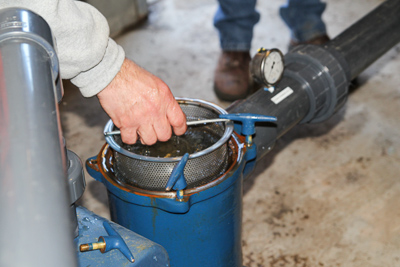
10 of 12: Each new pump filters the water a final time before pushing it through the system. The larger blue pump feeds water to the waterfalls at the south end of the garden.
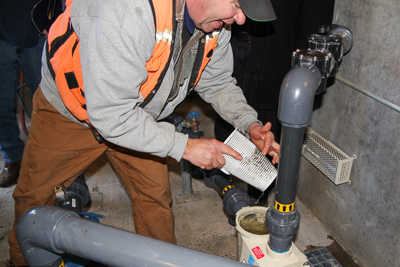
11 of 12: The smaller white pump recirculates water back into the pond itself, aerating it for the koi. Each of these filters is easy to remove and clean as part of regular maintenance.
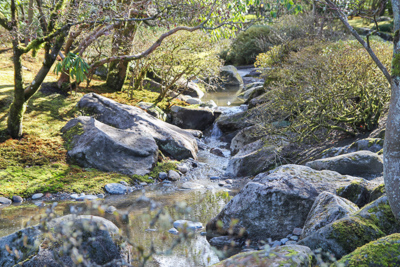
12 of 12: The work that winter by Turnstone has improved water flow to the streams and the pond, which has the added benefit of restoring the ambient and pleasing gurgle sound of the little water fall into the the headwaters of the pond. This work will hopefully improve the ease of maintenance tasks and thus reduce future costs.
Previous
Next












